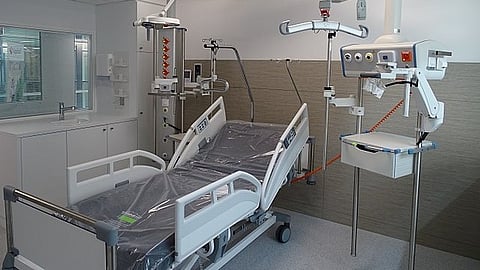In a first of its kind, the Ministry of Health and Family Welfare spelled out guidelines for Intensive Care Unit (ICU) admissions in the country. The guidelines were framed under the expert guidance of 24 critical care medicine doctors from India.
Though the medical fraternity has welcomed the move, certain sections also seek to ask for more clarity on the new guidelines. The government-issued guidelines state that the intensivist or specialist in the ICU should have a postgraduate qualification in internal medicine, anesthesia, pulmonary medicine, emergency medicine, or general surgery, along with the basic qualification of MBBS with at least three years of experience in an ICU setting.
The criteria for ICU admissions also include hemodynamic instability, a need for respiratory support, an altered level of consciousness of recent onset, and patients with acute illnesses requiring further intensive support and/or organ support. The guidelines further say that the criteria for admitting a patient to the ICU should be based on the anticipation of deterioration in the medical condition or organ failure and the need for organ support.
The new guidelines state that patients who are critically ill and do not give consent for ICU admission cannot be admitted. The same applies to the next of kin who refuses to give consent for ICU admissions. Any patient suffering from a disease with limitations in their treatment plan, anyone with a living will or advanced directive against ICU care, terminally ill patients with medical judgments of futility, or low priority criteria during disasters or pandemics where there are resource limitations, cannot be admitted into the ICU. Furthermore, any patient experiencing major intraoperative complications or postoperative care is included in the ICU admissions criteria.
The critical aspects that need to be taken care of while treating a patient in an ICU include continuous and intermittent monitoring of blood pressure, pulse rate, respiratory rate, heart rate, breathing pattern, oxygen saturation, urine output, capillary refill time, intermittent temperature, monitoring blood sugar levels and neurological status like the Glasgow Coma Scale (GCS), Alert Verbal Pain Unresponsive (AVPU), etc.
The ICU discharge criteria include:
The return of physical aberrations to baseline or near-normal status, reasonable resolution, and stability of the acute illness for which the ICU admission was initiated.
If the patient or the family decides to get discharged for palliative care or if further treatment is limited, if the family believes that further treatment is not beneficial medically, economic constraints should not influence the decision.
Further, if rationing is required in cases of prioritization due to a crunch in resources, the patient can be discharged from the ICU.


